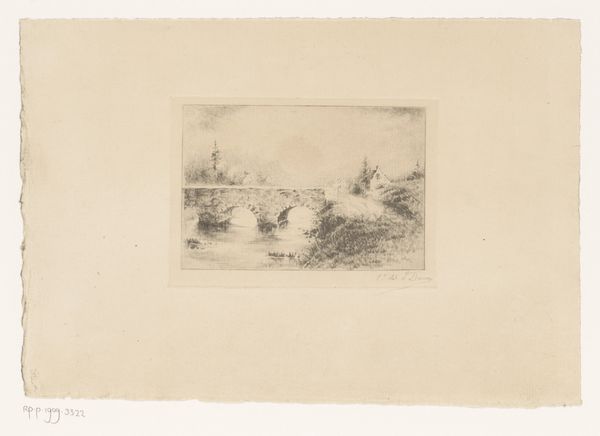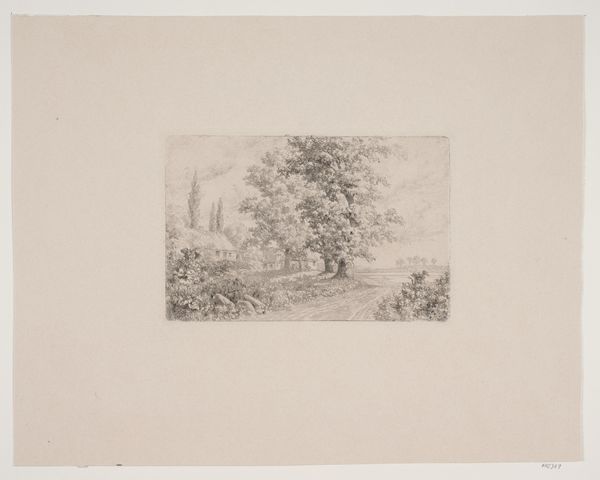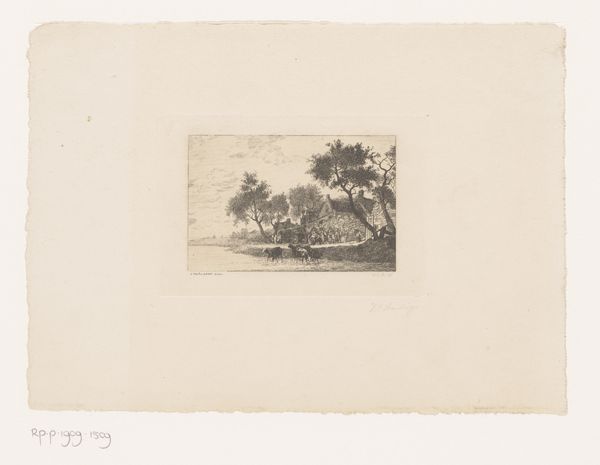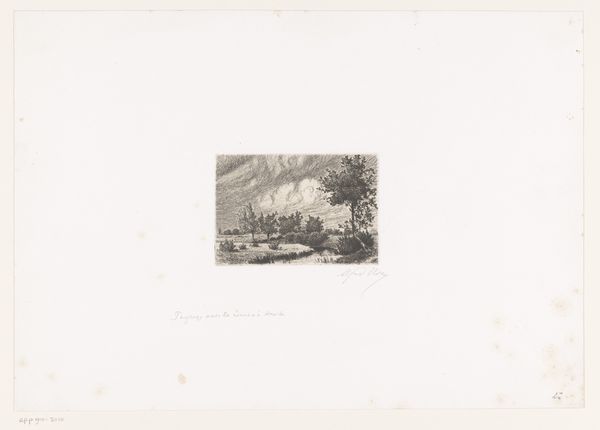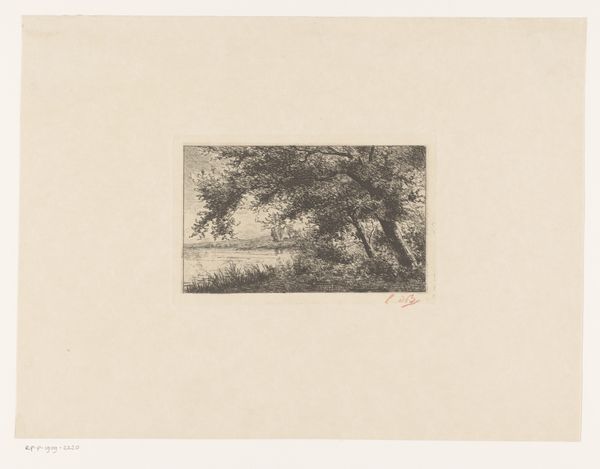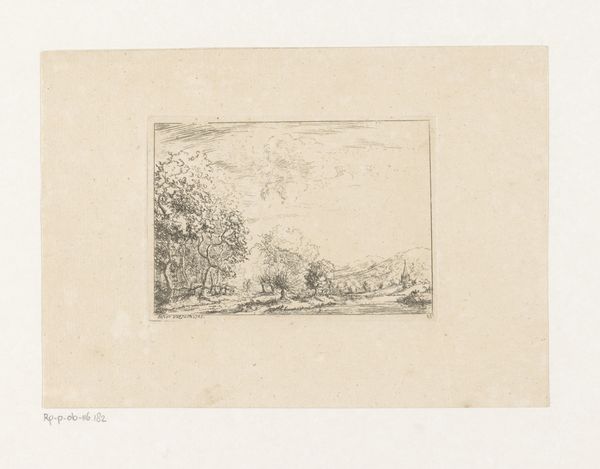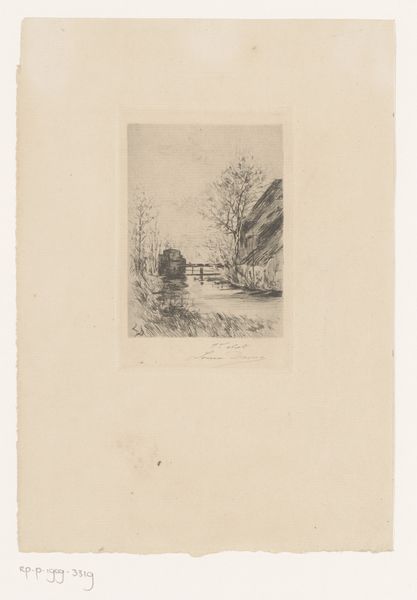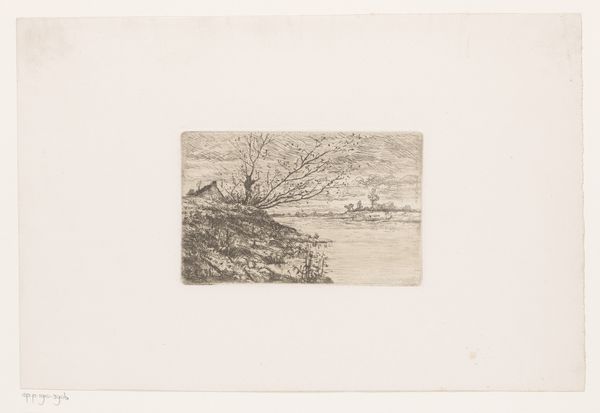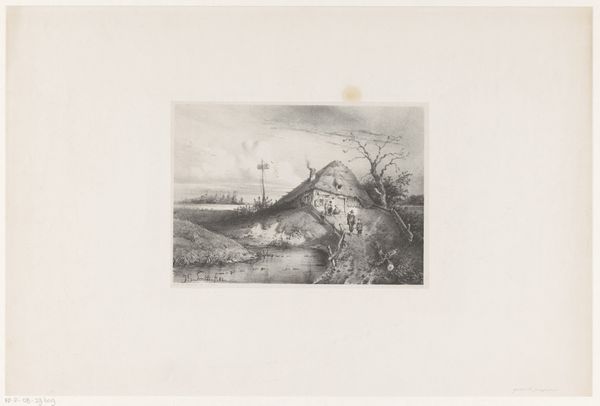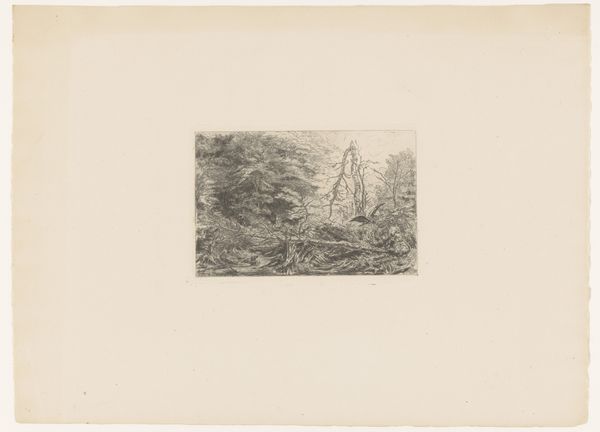
Dimensions: height 101 mm, width 140 mm
Copyright: Rijks Museum: Open Domain
Curator: Here we have Louise Danse's "Landschap met stenen brug bij Yvoir," a pencil drawing on paper, likely created between 1877 and 1909. It’s currently held in the collection of the Rijksmuseum. Editor: It strikes me as remarkably serene. The delicate rendering of the stone bridge, almost dissolving into the mist, evokes a real sense of quietude and contemplation. There is an intentional vagueness that really captures the ethereal quality of light and shadow. Curator: Danse was working in a Belgium undergoing considerable political and social transformation. Industrialization was advancing, reshaping the landscape but within that also romanticism thrived. This landscape allows an escape from the gritty urbanization many Belgians would have been dealing with at that time. The very choice of a stone bridge itself invites an examination of constructed barriers. It reflects those transitions and suggests deeper tensions of progress versus preservation. Editor: I see that tension articulated so skillfully in the interplay of textures: the rough-hewn stone of the bridge versus the softness of the water and surrounding foliage. The light seems diffused, enveloping everything in a uniform glow which has an intriguing atmospheric effect. I would like to engage with its visual construction as a whole to understand what is the overarching semiotic code? Curator: What does a structure built of old stone represent to those navigating their present? We need to consider that women artists like Danse navigated artistic and social terrain that men constructed to their own advantage, sometimes even literally as a barrier, that makes Danse's art all the more impressive to this day. Editor: I suppose our interpretations might differ greatly then, but this emphasis on structural integrity combined with romantic sensibilities resonates. I find that by considering her precise technical execution, it helps unlock the wider symbolic implications we are both engaging with now. Curator: Precisely. Only by acknowledging this complexity and her agency as a female artist in a rapidly modernizing Belgium can we truly appreciate this seemingly simple landscape. Editor: It is remarkable how much these intricate strokes can evoke. It is like a small window to both artistic execution and cultural context.
Comments
No comments
Be the first to comment and join the conversation on the ultimate creative platform.
